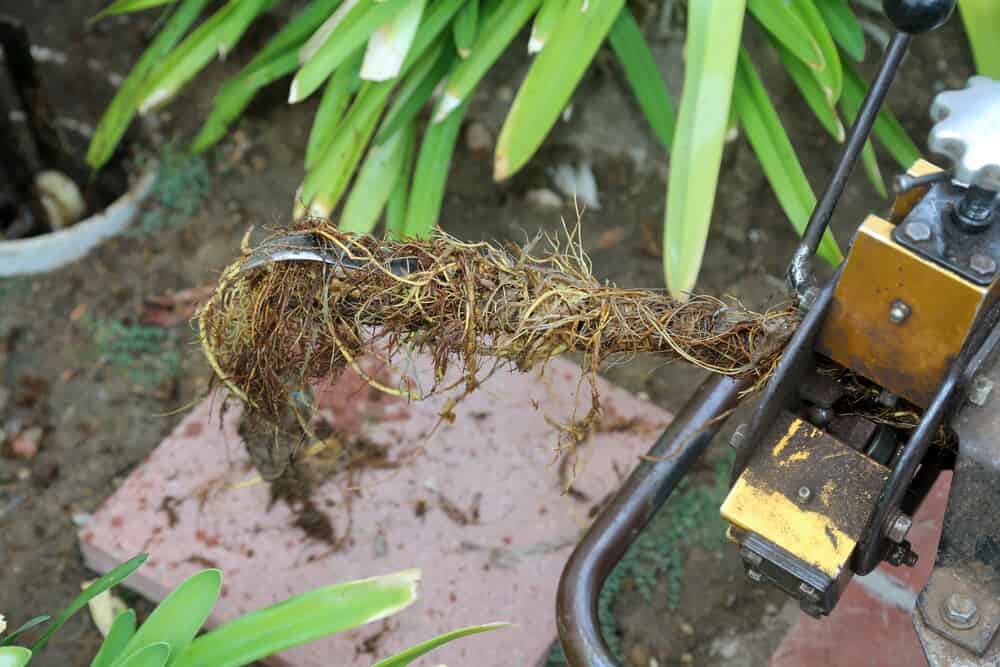Menu
Call This Friday to Get $50 Off
Do You Need a Plumber in Dallas, TX? Call us Now to Get $50 OFF
4.8 / 5 Ratings based on 1384 reviews Great Plumbers, Great Reviews
Call This Friday to Get $50 Off
Trees are invaluable when it comes to landscaping, but their roots can invade your sewer lines and cause serious problems. Let’s look at common signs of tree roots in sewer lines and how to keep them from wrecking your sewer line.

This is perhaps the earliest sign of tree roots in sewer lines. If you flush the toilet or run water down the sink and it drains slowly, there’s a good chance tree roots have found their way into your pipes. You should call in a trusted plumbing service to carry out an inspection and perform sewer repair as soon as you notice slow-draining fixtures.
This isn’t always the biggest indication of tree root damage, but it can give you an idea of whether you have a plumbing problem or not. Tree roots can block the waste flowing through your sewer lines, leading to offensive odors emanating from your drains.
Do you hear gurgling sounds when you flush the toilet or run water down the sink? This is an indication of an obstruction in the sewer line. The distinct gurgling sound is caused by the water trying to find its way through an obstacle in the drain.
Intruding tree roots can cause pipe damage and cause wastewater to leak out onto the surrounding soil. The soil around the problem area will then be saturated with wastewater, and after a while, you’ll notice soggy spots in your lawn. If the pipe damage is severe, the soggy spots will eventually sink in and cause sinkholes. If a visible sinkhole has formed near your sewer line, there are chances that tree roots have grown into your pipes.
When selecting trees for landscaping near your sewer line, opt for species with shallow and non-invasive root systems. Trees like dogwoods, ornamental cherry, and redbuds are less likely to aggressively spread their roots and cause damage to underground pipes. Prioritize planting these types of trees away from the sewer line to minimize the risk of root intrusion.
Installing a physical barrier between trees and the sewer line can be an effective preventive measure. Root barriers made of metal, plastic, or concrete can help block tree roots from encroaching into the pipes. These barriers should be buried at a depth of at least three feet to ensure the roots are deterred from growing towards the sewer line.
There are certain chemical treatments available that can inhibit root growth in the vicinity of sewer lines. Copper sulfate and potassium hydroxide are commonly used chemicals for this purpose. When applied properly, these chemicals create a root-repelling barrier around the pipes, discouraging roots from penetrating into the sewer system.
Have a plumber regularly inspect the area around your sewer line and remove any small or emerging tree roots that may pose a potential threat. A qualified plumber can perform periodic root cutting to keep the roots in check without harming the trees. This proactive approach can prevent root growth from reaching the sewer line and causing blockages.
If your sewer line has already experienced root intrusion or minor damage, relining the existing pipes can be an effective solution. Pipe relining is a trenchless sewer line replacement method that involves inserting a flexible liner coated with epoxy resin into the damaged pipe. The liner adheres to the inner walls, creating a new, seamless pipe within the old one. This process not only seals off existing cracks and leaks but also makes the pipe more resistant to future root intrusion.
If you’re looking for a reliable plumbing service that provides professional sewer repair and trenchless sewer line replacement, reach out to the skilled plumbers at Mr. Rooter Plumbing.
Basements stay dry because the main sump pump does its job, but some storms push…
Read More+A sink full of dishwasher water can be a shock, but it tells you something…
Read More+A good food prep routine makes life easier until your disposal starts to grind louder…
Read More+Clogged drains are irritating. Water pools in a sink. Hair collects in a shower, and…
Read More+